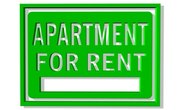
As the name suggests, a leasehold property is one that is leased to another for a specified period of time. The difference between a leasehold property and a simple rental property is that the lessee of the leasehold has granted ownership rights to others for the term of the lease – which may be anywhere from 99 years to 999 years. In general, this means the resident who has purchased the rights to live on the leasehold property does not have to worry about the property reverting to the owner any time soon. At the same time, the buyer of a leasehold property does not own the property in the way the buyer of a freehold property does. Transferring ownership of a leasehold property requires an understanding of the leasehold situation.
Advertise the property for sale as a leasehold property. During the terms of the lease, a leasehold property can usually be bought and sold multiple times. The seller must be sure to note to the new buyer who the leaseholder is, what the terms of the lease are and the remaining time on the lease. A buyer who purchases a leasehold property with 200 years remaining on the lease does not have to worry about the property reverting to the leaseholder. A buyer who purchases a leasehold property with only 10 years left, however, definitely needs to take this into consideration.
Transfer the property as though it is a standard real estate transaction. Buyers of leasehold properties can obtain mortgages and purchase the property as they would a freehold property. The lender will recognize that this is a leasehold property, and if there is still significant time remaining on the lease, the leasehold is unlikely to be a concern. The full information about the time remaining on the lease must be provided.
Provide the new owner with the leasehold agreement, as well as all contact information for the landlord. The landlord technically owns the property, even when the new buyer has a mortgage on it, so the new buyer needs to be aware of who the owner is.
Give the new owner any lessee requirements for residing on the property. In most cases, leasehold properties are transferred the same as freehold properties. In some cases, however, the landlord might require monthly or annual maintenance payments, as well as specific resident requirements for living on the property. The buyer of a leasehold property owns the right to live within the property, but he does not own the right to make substantial changes to it. The landlord still has the legal ownership of the property’s structural and external walls, and the new owner needs to be aware of what changes are allowed to be made. If a significant repair needs to be made, the landlord is responsible for approving and/or making that repair.
References
Writer Bio
Kristie Lorette started writing professionally in 1996. She earned her Bachelor of Science degree in marketing and multinational business from Florida State University and a Master of Business Administration from Nova Southeastern University. Her work has appeared online at Bill Savings, Money Smart Life and Mortgage Loan.

